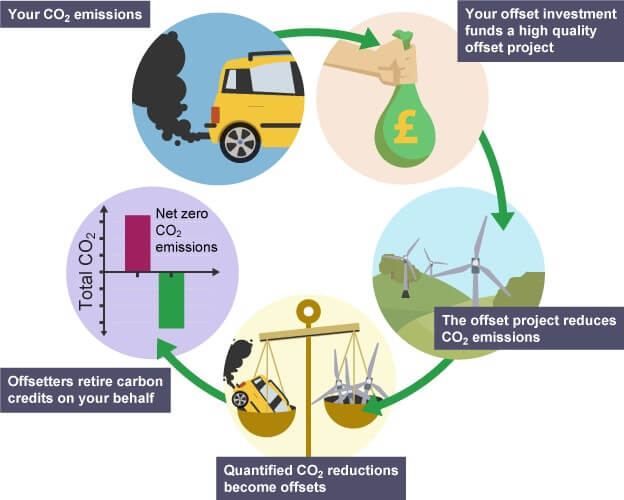Lots of organisations are now aiming to be carbon neutral in response to Scientists illustrating that reducing carbon and greenhouse gas emissions is the only way to limit the rise in global temperatures. But what does this mean in practise?
Firstly you need to understand how much carbon your activities emit into the atmosphere. This is called your carbon footprint, and most companies begin by estimating the carbon emissions associated with the energy they consume (known as a Scope 1 and Scope 2 carbon footprint). The aim is to then reduce those emissions each year by being more energy efficient, investing in renewable energy technologies, and perhaps changing your processes. Any remaining emissions each year can then be “offset” with carbon credits. One carbon credit “offsets” one tonne of carbon – meaning if you emit 10 tonnes of carbon in a year, you purchase 10 carbon credits to offset those emissions. Carbon credits are then invested into projects that either avoid emitting carbon, for example, a project to replace kerosene cook-stoves with solar stoves, as it avoids emissions that would have taken place if the cook-stoves had not been replaced; or credits are invested into projects that actually remove carbon from the atmosphere i.e. tree planting schemes. This leaves your organisation’s energy consumption (or Scope 1 and 2 footprint), as carbon ‘neutral.’
Carbon credits exist to enable responsible organisations to mitigate the carbon produced by their activities, by investing in projects that have a positive impact on the environment. Once purchased therefore, a carbon credit must be “retired” i.e. removed from circulation so that no one else can purchase it. This ensures that the monies invested in carbon credits goes directly to certified projects, brings additional value to the project and credits are not double-counted by being sold more than once.
So why bother? Carbon credits enable the funding of projects around the world that are improving our environment, and at the same time contributing to year-on-year reductions in carbon emissions – an essential requirement for managing climate change. It also enables organisations to differentiate themselves in the market place as being “carbon neutral” and demonstrates you are committed to taking responsibility for your emissions.
If you would like to chat through your carbon neutral ambitions, or any other terms you’ve heard, such as “net zero carbon,” or “PAS 2060,” please get in touch.
Image sourced from BBC Bitesize.




